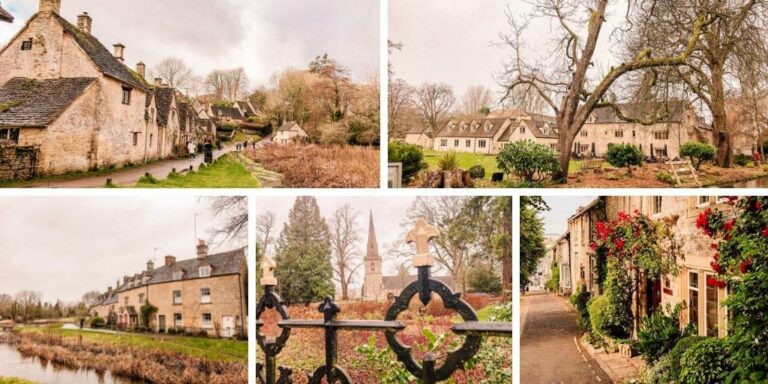21 famous castles in England to explore
With so many incredible castles in England it is pretty much impossible to miss adding one (at least) into your itinerary. Deciding which one can be the problem.
In this article we take a journey from London and the most famous castle of them all – the Tower of London site of numerous executions (including a couple of Henry VIII’s wives) – through the English countryside from south to north to discover 21 of the best castles in England.
To save money when purchasing tickets I have indicated if the castle is a National Trust or English Heritage site. Members gain free entry but must book a timed entry in advance. (Visiting from overseas? English Heritage have a membership scheme for you)
Famous Castles in London and South East England
The Tower of London
One of the best English castles (and possibly the most famous) would have to be the Tower of London. Located on the north bank of the River Thames the tower is an internationally famous and iconic structure that has been part of London’s skyline for 1,000 years.
After building castles throughout the English countryside, William the Conqueror built the Tower of London to protect the city and to demonstrate his power. Since then, it has been a fortress, a royal home and a prison.
Today it is one of the most popular tourist attractions in London and contains a wealth of history as well as the Crown Jewels. The Yeoman Warders, or the Beefeaters, greet visitors and explain the castle’s amazing history.
Entry to the Tower of London is included in the London Pass.
Read more | Visiting the Tower of London – tips, tricks & FAQ’s
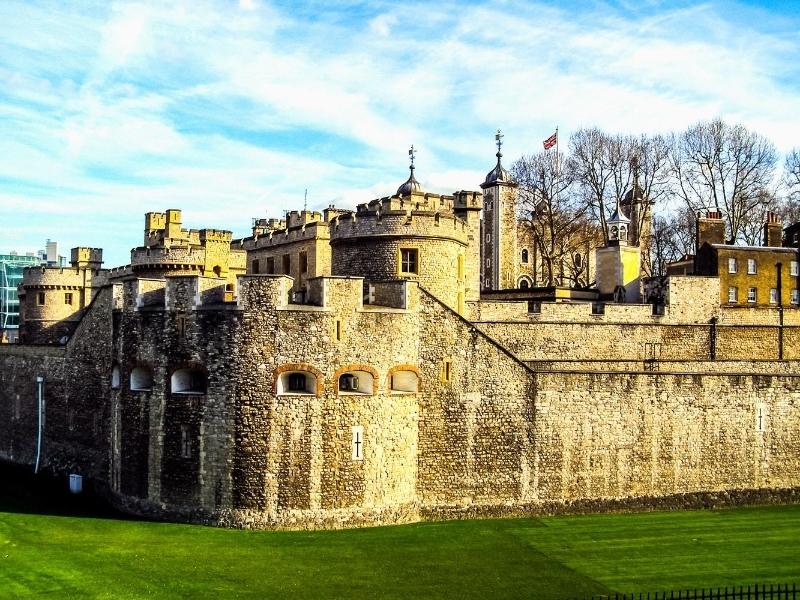

Windsor Castle
One of the most famous English castles is Windsor Castle, built in 1070 by William the Conqueror in Berkshire, some 24 miles outside of London.
It is the oldest occupied castle in the world and has been home to 39 English monarchs. When not in Buckingham Palace, the Queen resides there. Since she can’t use all 1,000 rooms, some of the castle is open to the public.
Visitors can tour the opulent state rooms and apartments and see a sizeable portion of the royal art collection. The grounds are impressive, as is the lovely gothic cathedral, St. George’s Chapel.
Check online for the schedule of the changing of the guards — you won’t want to miss it.
Good to know – Windsor Castle is a popular stop on many guided day trip tours for example this one from London to Stonehenge and Oxford or this one from London to Bath and Stonehenge. If you are pushed for time and want to see a combination of attractions we recommend booking a tour.
Read more | How to travel to Windsor Castle from London
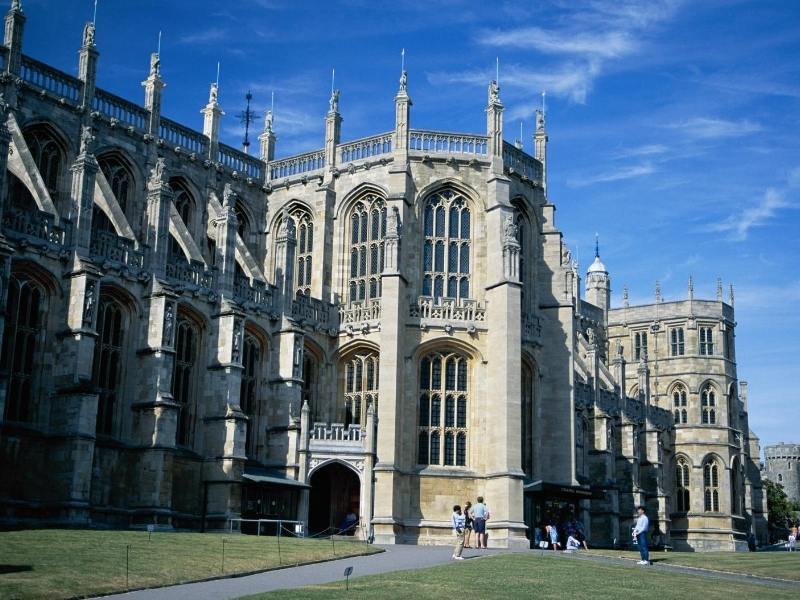

Arundel Castle
On a hilltop overlooking the River Arun, 65 miles from London, is Arundel Castle, the seat of the Dukes of Norfolk for the last 850 years. It is a grand castle known for impressive round towers, gothic windows and a distinctive motte that was built in 1068.
In the 19th century, the castle was converted into a country home. Because of an impeding visit by Queen Victoria and Albert, Arundel was modernised and central heat and electricity were added.
Today, even though it is still occupied by the Duke of Norfolk, many rooms as well as the formal gardens are open to the public.
Good to know – It is possible to combine a trip to Arundel and Brighton on this private Brighton & Arundel Castle day tour which includes door-to-door transfers from central London.
Read more | Top 10 places to visit in the South East
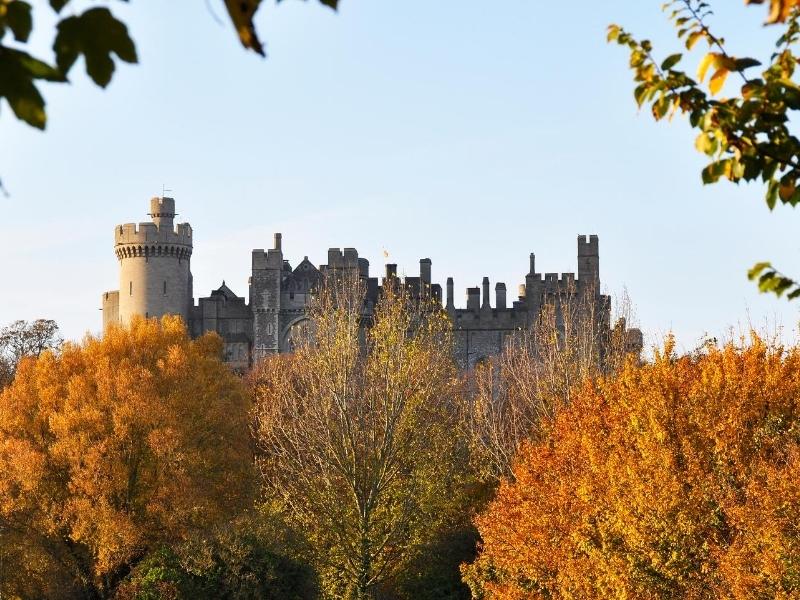

Leeds Castle
Just an hour from London, Leeds Castle sits upon the River Len in an impossibly picturesque setting.
It dates back to the Normans, who built the original castle around 1119. It passed through the hands of six medieval queens until it got the attention of Henry VIII who used it as a residence for his first wife, Catherine of Aragon.
Eventually it became a private home and is now open to the public. Visitors can tour the castle and explore the lovely grounds that offer spectacular views of the countryside.
Unlike many old English castles, Leeds has a maze made out of 2,400 yew trees which has proven to be a popular all-ages attraction.
Why not combine a visit to Leeds Castle, Canterbury Cathedral and Dover on this full-day tour to all the top destinations in The Garden of England, Kent?
Read more | 7 castles you can visit on a day trip from London
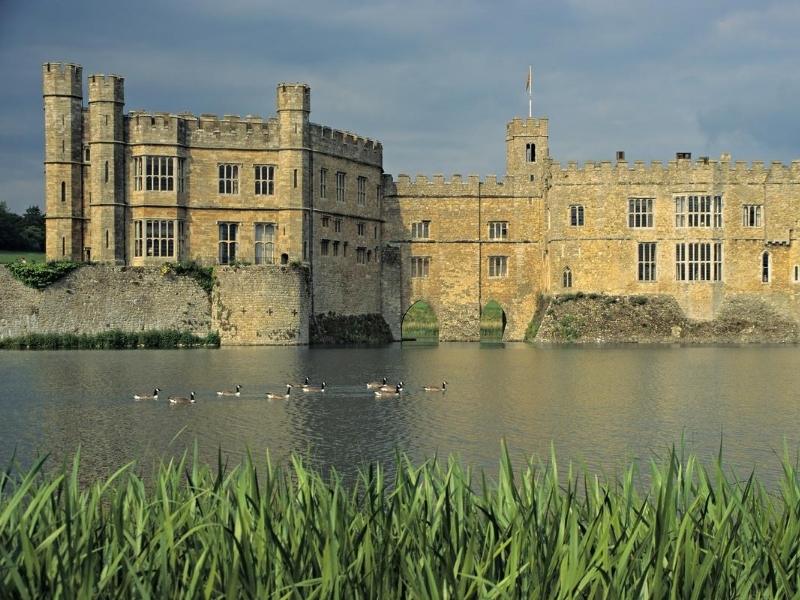

Dover Castle
Dover Castle is the largest and arguably the most imposing of all the English medieval castles. Only 90 miles from London, it has been a symbol of English power for centuries because of its strategic location overlooking the English Channel.
The castle was built by Henry II in the 1180s but the land had been a military stronghold since the days of the Romans. Visitors can see the remains of a Roman lighthouse and travel through English history as they tour the great towers, narrow staircases and tunnels.
The grounds are extensive and well worth exploring, so make sure to wear your walking shoes.
Dover Castle is an English Heritage property.
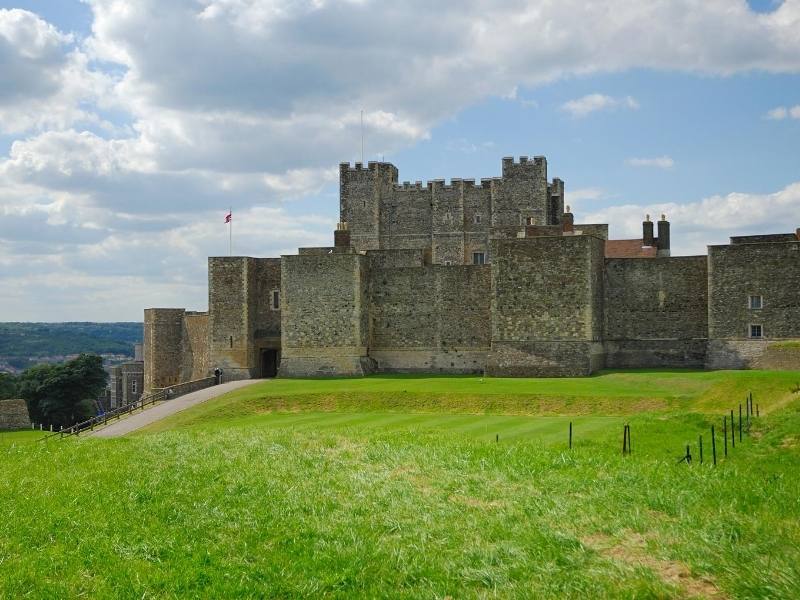

Hever Castle
In 1270, William de Hever, a sheriff under King Edward I, built himself a castle in Kent, 30 miles outside of London. At that time, Hever Castle had a gatehouse, a walled bailey and a moat with a drawbridge.
A few centuries later, Hever Castle became the home of the Boleyn family, and they added a Tudor home inside of the castle walls. Future Queen to Henry VIII and mother to Elizabeth I, Anne Boleyn, spent her childhood there.
The castle has since passed through many owners and was completely renovated in the early 1900s. Today, visitors come from all over the world to enjoy the lovely castle, its 125-acre grounds and unique double moat.
Inside of the castle, they’ll find sumptuously decorated rooms with an assortment of historical paintings and artefacts relating to the Boleyn family and to over 700 years of English history.
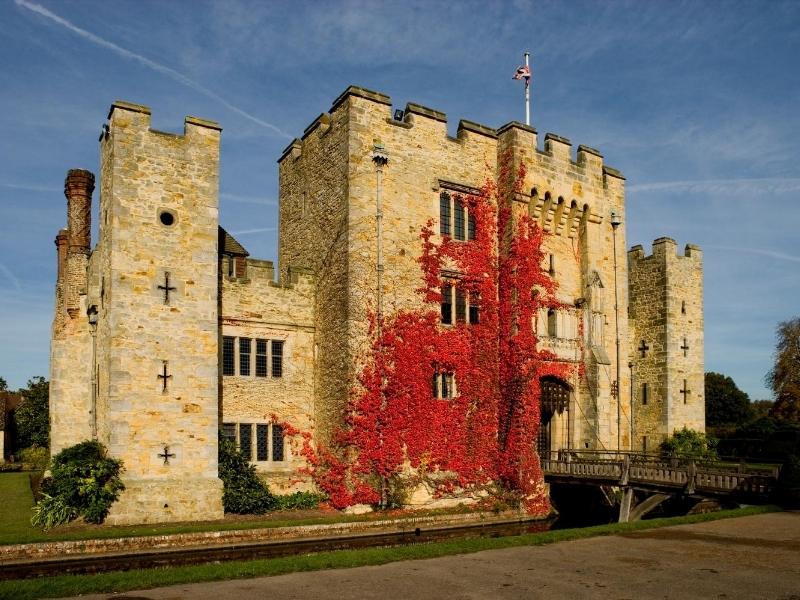

Bodiam Castle
One of the best examples of a medieval castle in England is Bodiam Castle in East Sussex.
With its moat, dramatic gatehouse entrance and impressive circular towers, it very much looks the part of a castle from a fairytale. Built in 1385 by Sir Edward Dalyngrigge, it was primarily a defensive structure.
In 1926, it was given to the National Trust. Today, visitors should not expect to see luxurious state rooms or great halls as the castle’s inside is nearly ruined.
You can, however, climb a few of its towers but beware — the stairs are very steep. The grounds are lovely and could take several hours to explore.
As mentioned above Bodiam Castle is a National Trust property.
Beautiful Castles in North East England
Alnwick Castle
A Northumberland castle known for its history and dramatic architecture, Alnwick Castle is over 1,000 years old. As home of the Duke of Northumberland, it is the second largest occupied castle in England.
Originally a built in 1096 as a small Norman fortress, the castle has been remodelled and expanded over the years into what it is today.
A large portion of the castle is open to the public including the Italianate staterooms, the inner bailey and the gun terrace.
Recently, the castle was portrayed in two of the Harry Potter movies as Hogwarts. Consequently, for an extra charge, they offer broomstick training for any enthusiastic young Harry Potter fans.
Alnwick is easily visited via tour on a day trip from Edinburgh.
Read more | Things to do in Alnwick
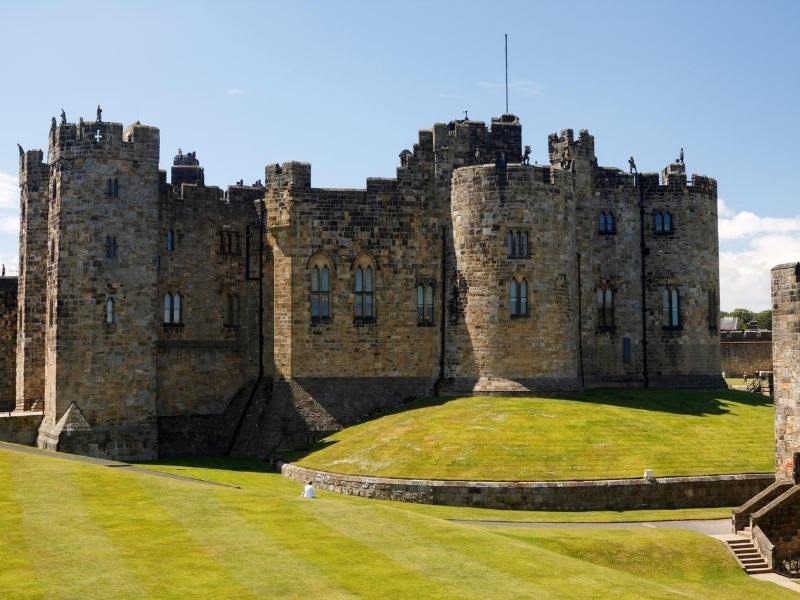

Bamburgh Castle
On the Northumberland coast, perched atop of a volcanic plateau, is Bamburgh Castle, one of the oldest English castles to visit. With a history that dates back to 420 AD, it was the first castle to succumb to artillery during the War of the Roses.
Since 1894, it has been home to the Armstrong family. There are 14 rooms that are open to the public including the Great Kitchen, the King’s Hall and the Keep.
History lovers will adore the hundreds of years of artefacts throughout the castle but should also make sure to spend time exploring the beach and grounds.
Looking for a cottage along the Northumberland coast for your visit? Check out my guide to the best Northumberland Coastal villages and cottages for your stay.
Read more | Top 10 places to visit in the North East
Lindisfarne Castle
Lindisfarne Castle is a 16th century Tudor fort located on the Holy Island of Lindisfarne in Northumberland. In 634 AD, it was the home of the first monastic community in England but was eventually abandoned after Viking attacks.
In the early 1900s, Lindisfarne Castle was remodeled into a country retreat. Luckily, many of its 16th century features still exist, like its lovely vaulted passages.
There are a few partially furnished rooms open to the public but it’s the sweeping views during the walk up to the castle that visitors love the most.
Keep in mind, Lindisfarne is a tidal island. When the tide is high, the causeway disappears, so planning ahead is essential.
Lindisfarne Castle is a National Trust property.
Read more | Visiting the Holy Island of Lindisfarne
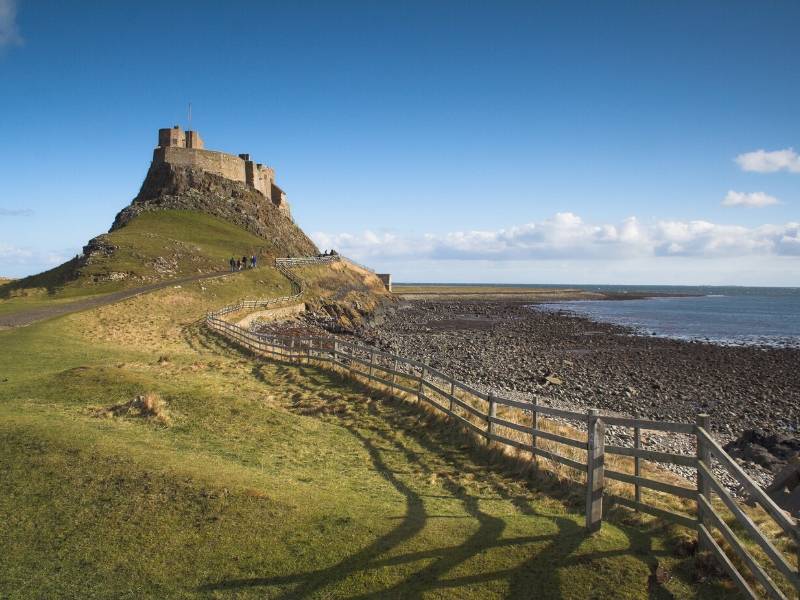

Warkworth Castle
In the 14th century, the powerful Percy family began building a castle in Northumberland. They chose a loop of the River Coquet as the location, where a 12th century motte-and-bailey structure previously existed.
Today, the Warkworth Castle is ruined but there’s still plenty to explore. The Keep and the kitchens are there as well as the Great Hall and the Great Tower, a marvel of medieval architecture and supposedly the place where Henry “Hotspur” Percy plotted treason against Henry IV.
The Lion Tower, built in 1480, still stands and was named for the symbol of the Percy family. The lion statue is still visible today.
Read more | A drive along the Northumberland Coastal Route
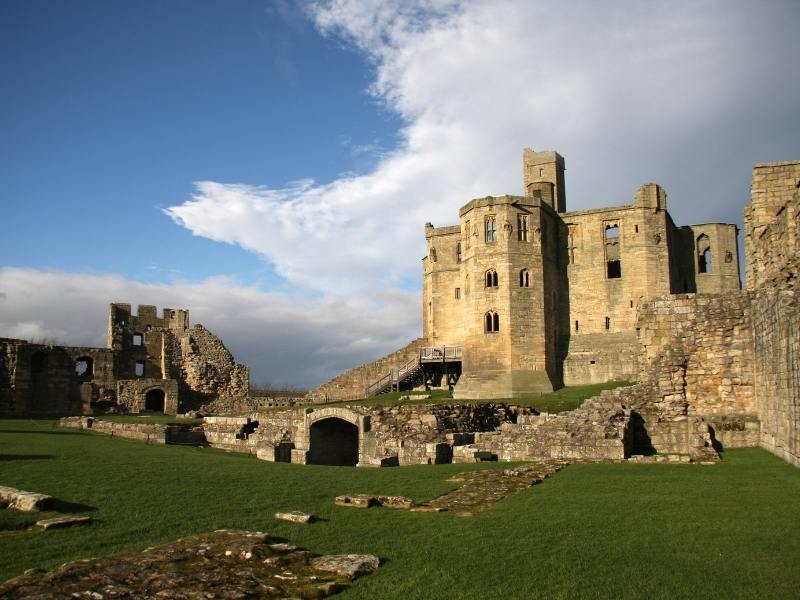

Dunstanburgh Castle
On the Northumberland coast you will find the ruins of Dunstanburgh Castle. It was a 14th century fortification built by Earl Thomas of Lancaster. After he was executed, it was claimed by the crown who, because of its strategic location, maintained it for hundreds of years.
Today, it is a crumbling shell of its former self and is owned by the National Trust. Still, it is a highly atmospheric place with extraordinary views of the beach, the sea and the rugged coastline.
Climb through the great gatehouse and explore the Lilburn Tower. When you go, park your car in Craster and walk the one and a half miles along the coast to reach the Dunstanburgh ruins.
Dunstanburgh Castle is a National Trust and English Heritage property.
Read more |Best castles to visit in Northumberland
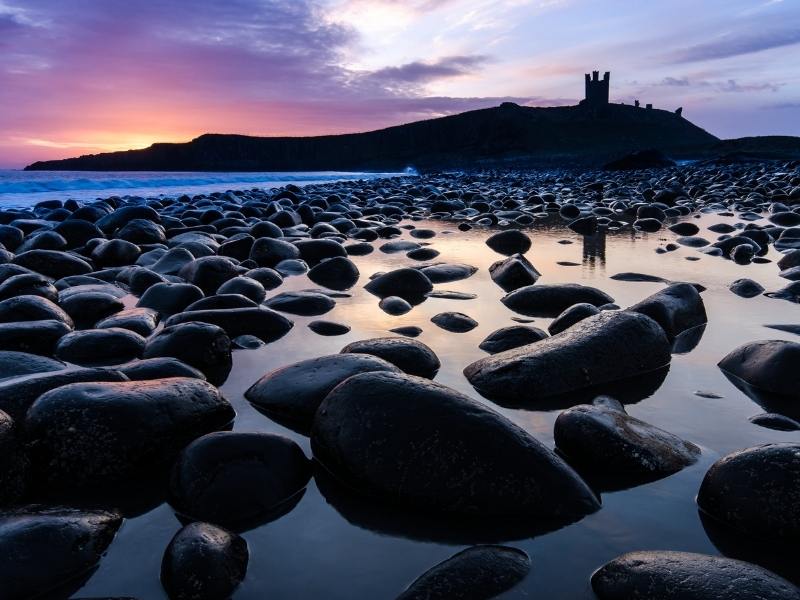

Durham Castle
If you’re a student at University College in Durham England, there’s a chance you might get to live in a castle — Durham Castle, that is. Since 1840, the castle has been used by University College and today, over 100 college students call it home.
In the 11th century, William the Conqueror built the castle and it quickly became a Norman stronghold. Its northern position would also eventually help maintain control over the Scottish border.
Today, 50-minute public tours are available throughout the week, allowing visitors inside to see the Norman chapel with its well preserved Norman doorway.
There’s also a 17th-century black staircase and other historical features any castle lover will enjoy. Check online for tour times and availability.
Read more about Durham in my complete Durham Travel Planning Guide which includes all the essential information you need to plan your visit.
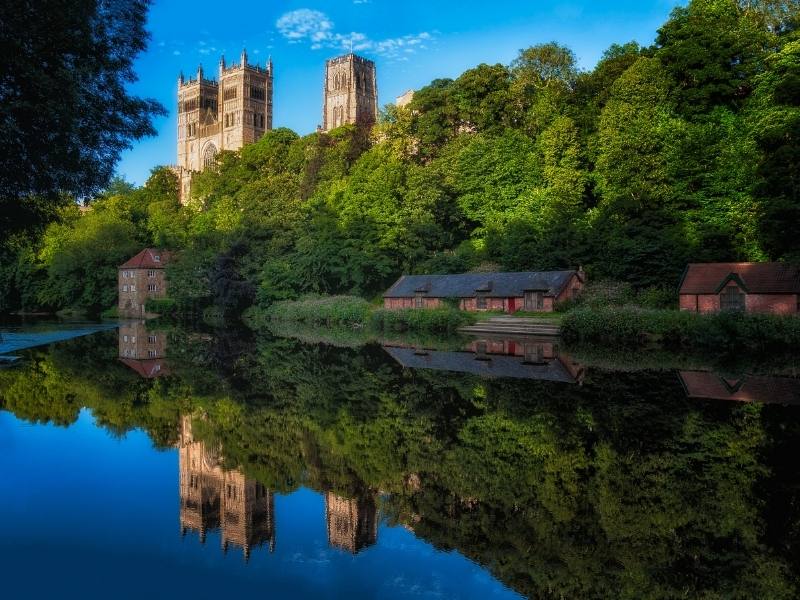

Best castles in South West England
Tintagel Castle
In northwestern England, on Cornwall’s rugged coastline, are the windswept ruins of Tintagel Castle. Even in its day, 800 years ago, Tintagel wasn’t your typical medieval castle — it wasn’t built for defence or military advantage.
The King of England’s brother, the Earl of Cornwall, built his castle on a cliff to recreate the setting of the legends of Camelot. Was he the ultimate King Arthur fan or just whimsical and a touch irresponsible with his brother’s money? It’s difficult to say.
Within a decade after construction was finished, the castle began falling into to ruin. Today, with its dramatic ocean-side setting, Tintagel feels rich in both history and legend.
Tintagel is an English Heritage property.
Read more | Top 10 places to visit in South West England
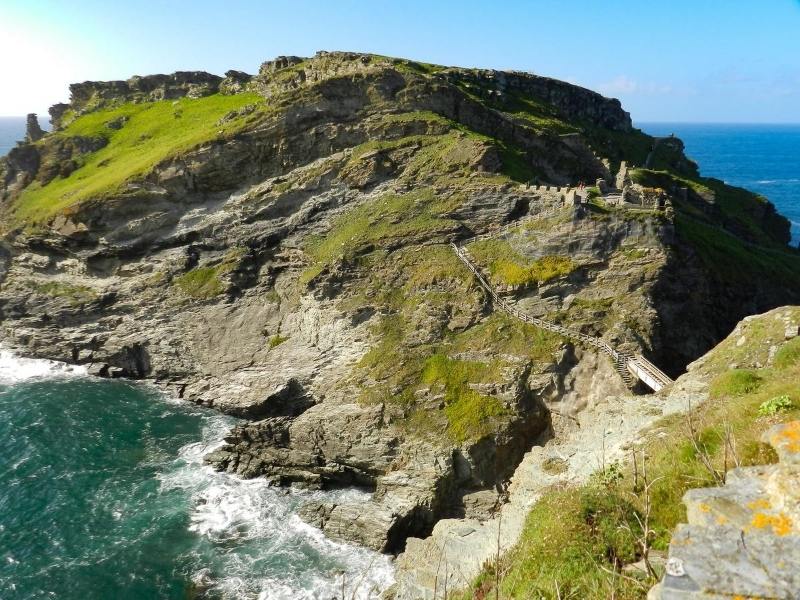

Carisbrooke Castle
Carisbrooke Castle was built on the Isle of Wight in the 12th century. Throughout the years, this very romantic castle has been an artillery fortress, a prison for Charles I, a royal summer home and until the 1940s, it housed the official office of the Governor of the Isle of Wight.
Much of it is still standing today, including the Great Hall and Great Chamber. There is also an Isle of Wight Museum in one of the upper rooms.
Visitors will enjoy the breathtaking views from the castle’s keep and battlements. Children and adults alike will fall in love with the Carisbrooke Donkeys and enjoy watching them in action working the 16th century treadwheel.
Carisbrooke Castle is an English Heritage property.
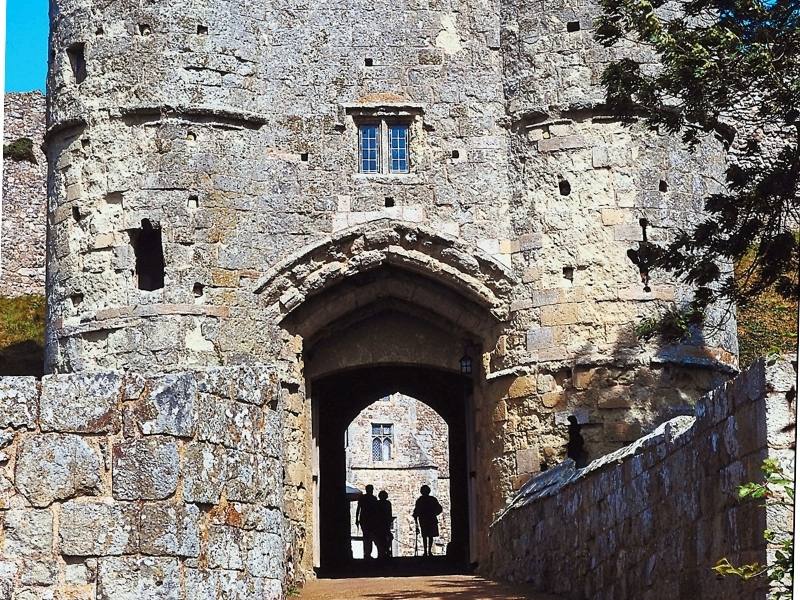

Corfe Castle
The 1,000-year-old ruins of Corfe Castle can be found in the county of Dorset, in the village of the same name.
Corfe Castle once occupied an area of strategic importance because it protected the route between Wareham and Swanage in a gap in the Purbeck Hills.
Originally built of wood, William the Conqueror refortified it with stone. Eventually, it became a royal fortress and lasted for hundreds of years.
Today, it is a favorite attraction for its intriguing beauty and rich history. After exploring the crumbling walls and hidden nooks of the ruins, visitors should make a point of seeking out the delightful shops and tea rooms in the village.
Corfe Castle is a National Trust property.
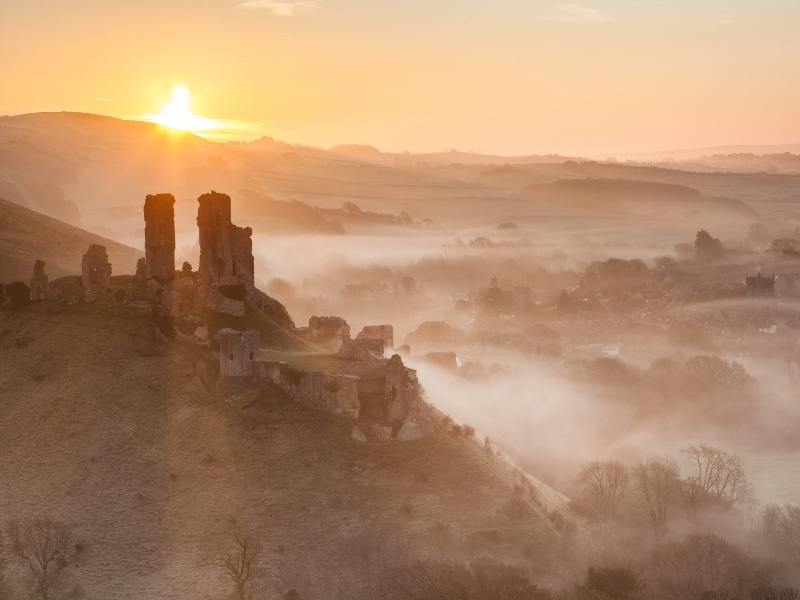

Sudeley Castle
Sudeley Castle dates from the 15th century and is one of the more romantic castles in England. It’s tucked in the Cotswolds near Winchcombe and has been associated with some of the most famous royal names in English history including Henry VIII and Katherine Parr, who is buried there.
It was recently refurbished and though it is privately owned, it is open to the public for tours and available for private events.
Visitors can explore some of the castle’s rooms, learn about their history and then go investigate the overgrown and highly atmospheric ruins.
Explore the 10 award winning gardens, the on-site restaurant and the children’s play area.
Don’t miss adding a visit to Sudeley Castle into your itinerary as it is one of the best things to do in the Cotswolds.
Read more | Cotswolds Travel Guide
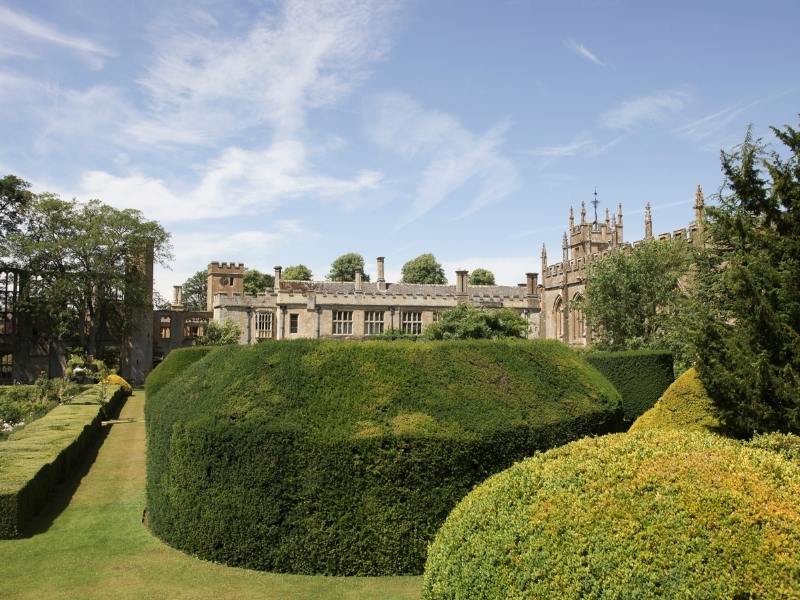

Castles in the West Midlands of England
Warwick Castle
In 1068, in the small country town of Warwickshire on the River Avon, William the Conqueror began building a humble motte-and-bailey structure. Eventually, it would be fortified with stone and would become the great Warwick Castle.
Today, the castle is unoccupied and visitors will marvel at how well its 14th century architecture has been preserved. Tour the Great Hall and state rooms, both packed with historical objects.
Outside of the castle, you’ll see staff members in period costume as you tour the grounds. Be sure to watch the aerobatic bird demonstration or take some time to learn about medieval weaponry. Warwick Castle is a must visit if you have children as they have so many fun activities throughout the year,
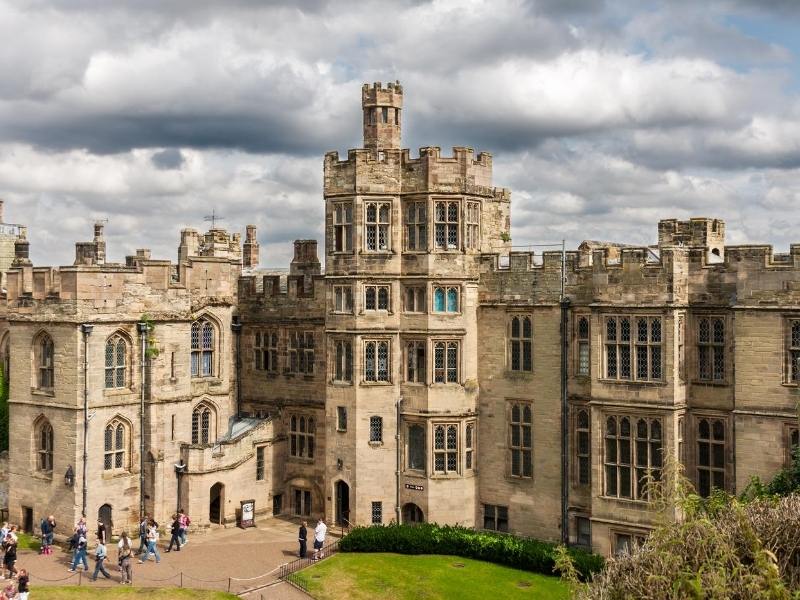

Kenilworth Castle
You wouldn’t know by looking at it now, but Kenilworth Castle was a crucial royalist stronghold during the English Civil War.
Located in the town of Kenilworth in Warwickshire, the castle was built over several centuries and has the distinction of having survived a six-month siege in 1266. Today it is the largest ruined castle in England but still has fine examples of 12th to 16th century architecture throughout.
The Tudor gatehouse and the Norman keep are noteworthy examples and shouldn’t be missed. The gardens have been restored to an approximation of their 17th century appearance and make for a lovely area to stroll around and take in the views of the countryside.
Kenilworth Castle is an English Heritage property.
Read more | 10 places to visit in the West Midlands
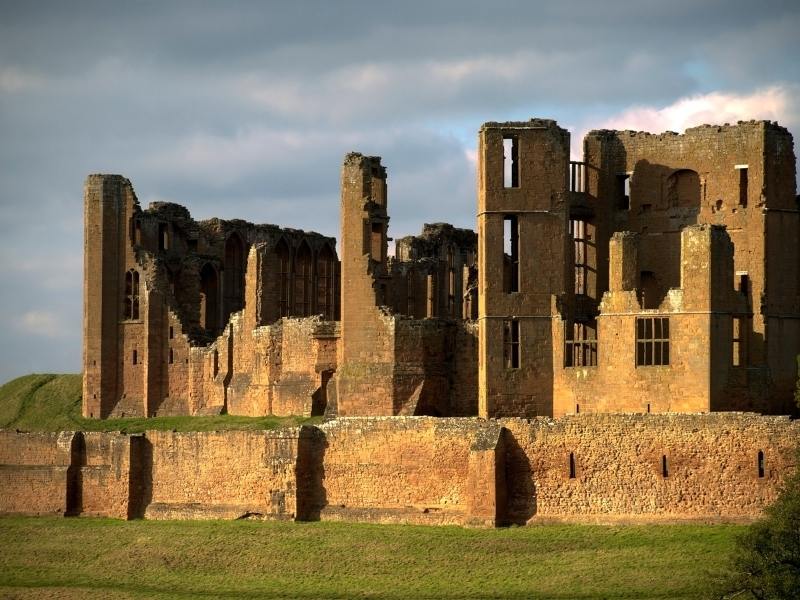

Castles in the East Midlands
Lincoln Castle
In medieval times, Lincoln was one of the most important settlements in England. Perhaps that’s why William the Conqueror built Lincoln Castle over an already existing Roman fortress in 11th Century.
Lincoln Castle is unique because it has two mottes and a Victorian prison inside the castle walls that sightseers can actually explore. It also is the home to one of the four surviving copies of the Magna Carta.
You can visit the castle grounds for free but you need to buy a ticket to do the medieval wall walk as well as tour the prison, enter the chapel and see the Magna Carta — all well worth doing.
Read more | 10 places to visit in the East Midlands
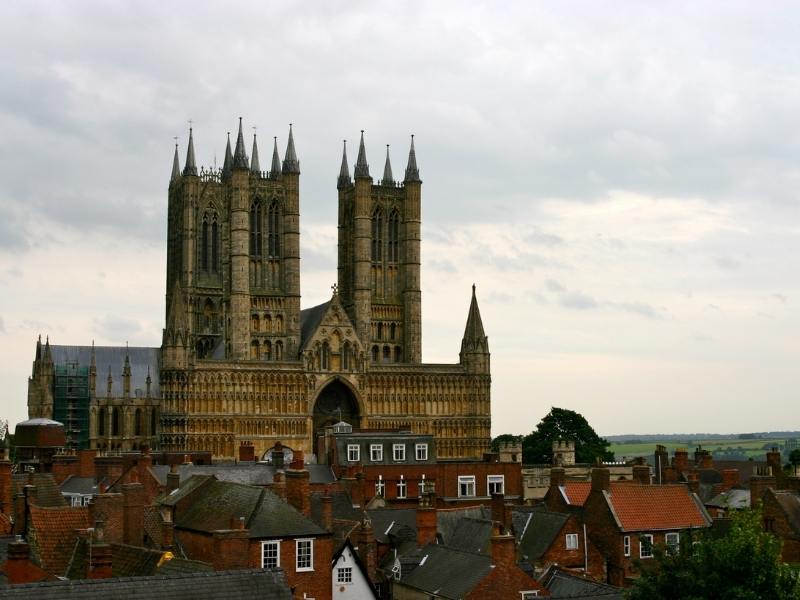

Bolsover Castle
In the English county of Derbyshire castle enthusiasts can find Bolsover Castle. It was built by Royalist Commander Sir Charles Cavendish in the 17th century over the remains of a 12th castle. No expense was spared as Cavendish wanted all guests to be impressed and to have a good time.
Today the castle is ruined but its stunning location and spectacular views make up for the building’s degraded condition. Since 1984 English Heritage has cared for the castle and has recently restored the parapets on the wall-walk.
The gardens are lovely and have a Venus fountain as their focal point. Plan to spend several hours exploring the extensive grounds.
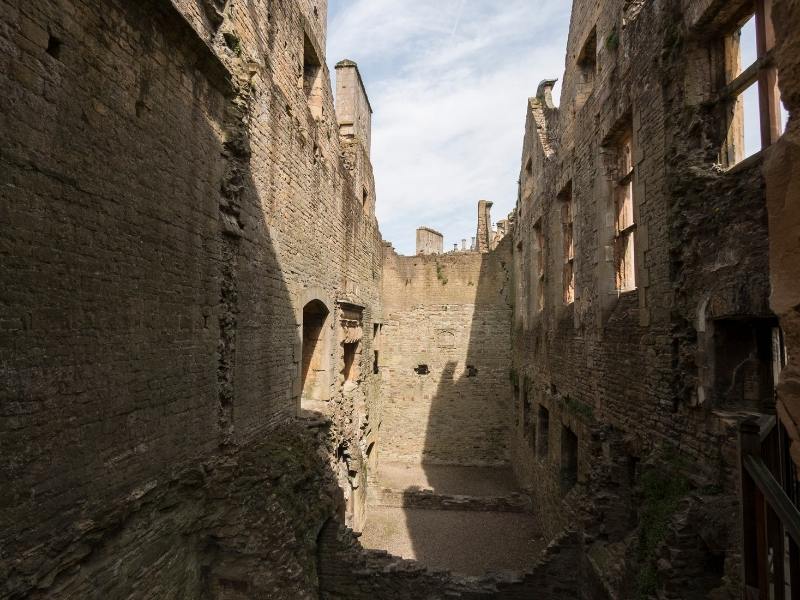

Bonus – Downton Abbey aka Highclere Castle
Famous as the home of the Crawley family in the highly acclaimed (and popular) British TV series Downton Abbey. Highclere is actually the seat of the Earl of Carnarvon and family and is located in Hampshire.
It was the 5th Earl of Carnarvon, George Herbert who famously discovered the tomb of Tutankhamun in the 1920s.
The castle is open to visitors throughout the year and is included in many tours from London.
READ – How to plan a visit to Highclere Castle (Downton Abbey)
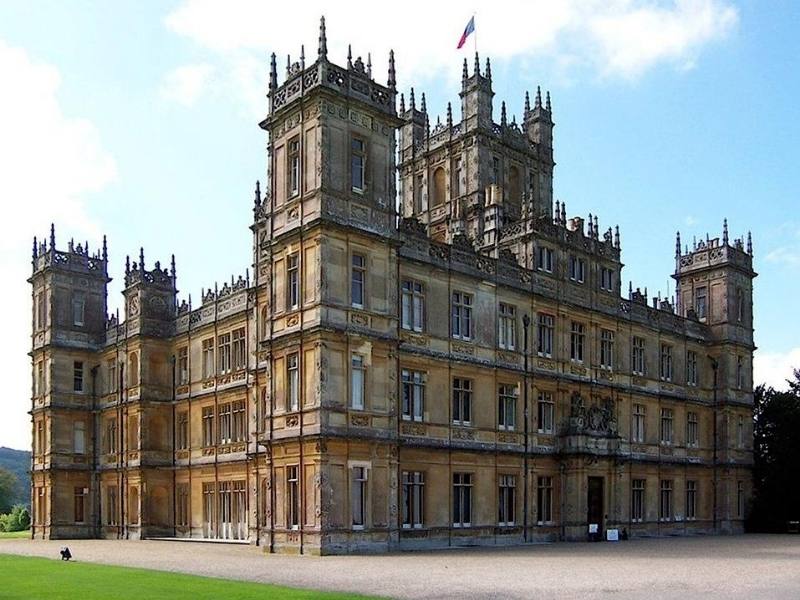

Planning to visit English castles – some tips!
Do make sure you plan ahead if you wish to visit any of the castles mentioned in this article. Check opening times and any restrictions. Wear comfortable shoes (cobble stones and uneven ground tends to be a feature of many of the castles and is unforgiving on the feet) And of course don’t forget your camera!
Love castles? Want more? Check out my guides to the best Scottish castles and the best Welsh castles to visit!
Many of these castles belong to either English Heritage or National Trust UK. It may be cost effective to join these organisations (annual membership) if you are a UK resident.
For overseas visitors there are alternate membership options worth considering if you are planning to include a number of castles, stately homes, ancient monuments, historic houses, gardens in your itinerary.
If spending the night in an English castle is on your UK bucket list you will be happy to hear that there are a few castles that offer accommodation. Check out my England Accommodation Guide for further information.
You will have noticed that there are a lot of castles along the North East coast. Northumberland actually has the most castles of any English county.
If you are interested to learn more about English history Northumberland is the perfect destination (it also has the advantage of having a beautiful coastline, the best night skies in the UK, some beautiful towns and villages plus numerous Roman ruins!) Read more in my Northumberland Travel Guide
Read more about the UK in my travel guides

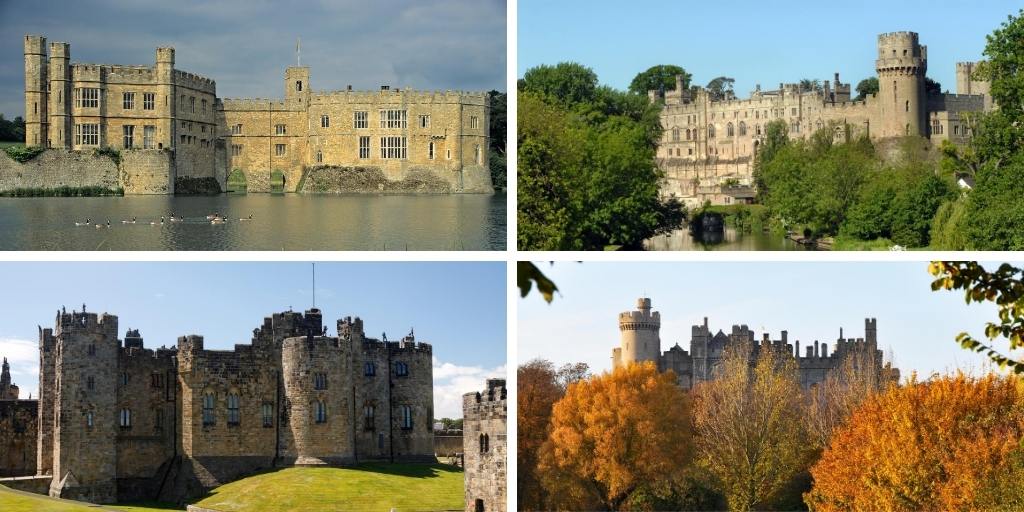
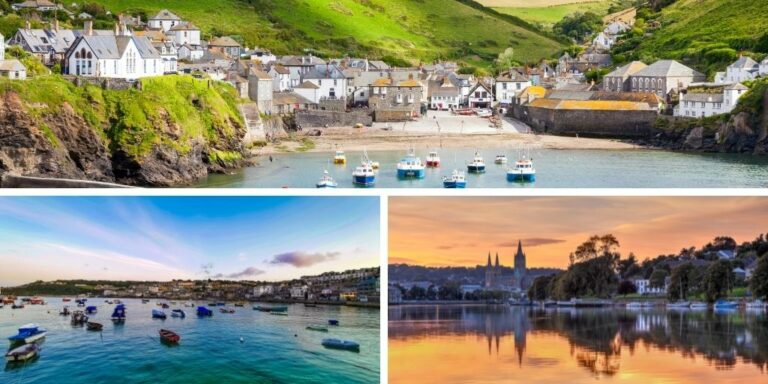
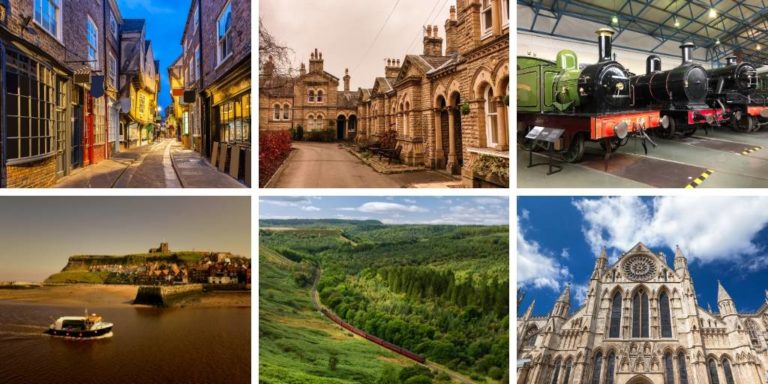

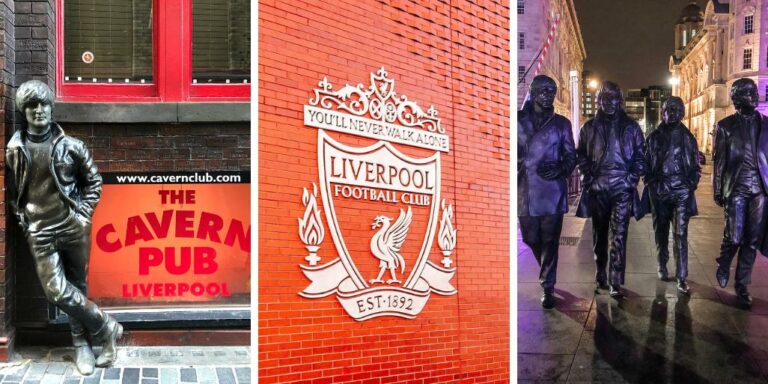
![How to get around the Cotswolds [Driving, Public transport options, Tours]](https://uktravelplanning.com/wp-content/uploads/2024/08/How-to-get-around-the-Cotswolds-signposts-768x384.jpg)
